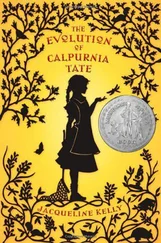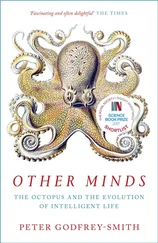This chaotic calendar continued to be used at Athens, although Democritus learned of the nineteen-year cycle on a visit to Babylon about 448, and Meton, in 433, tried to introduce it but could not win Athenian approval. The 354-day calendar of Mesopotamia is known to the Arabs to this day.
The attempt to fit the lunar month into the solar year was continued until the time of Julius Caesar (45 B.C.). The Romans used a modified version of an Anatolian calendar which they had obtained from the Etruscans, but they mismanaged it so completely that by the time of Caesar the civic year was about three months ahead of the solar year. Caesar adopted the Egyptian calendar of 365 1/4 days by inserting two months before March and rearranging the number of days in the months as we have them today. This calendar was made even more accurate when Pope Gregory XIII provided in 1582 that full century years (like 1800, 1900, 2000, and so on) would not be leap years except when they could be divided by 400.
The obsession of the archaic civilizations with astronomy and calendars had, originally, a rational and practical explanation and undoubtedly it was pursued with this end in view in the period 5000-2500 B.C. By the third millennium, however, both in Mesopotamia and in Egypt, the rate of expansion was beginning to slow down, the priestly or royal surpluses were increasingly being used for nonproductive purposes, and social discontents were rising. These priestly surpluses were controlled by such a small group that they could be applied to utilize new and better methods of production only by extending the benefits of such increased production to wider and wider circles of society. The priestly groups already had more of the necessities of life than they could possibly consume, but they were, perhaps unconsciously, reluctant to extend these benefits to such a wide group as to make their clique's existence meaningless or even impossible. Instead of using their surpluses for increased production, which would involve a drastic redistribution of the society's income, they began to apply this income to nonproductive purposes. As a result, the age of expansion began to draw to its close about the middle of the third millennium B.C.
We have said that an Age of Expansion shows geographic extension of the area of the society's culture, increase in its population, increase in its economic production, growth of factual knowledge, and, probably, certain elements of science and of democracy. The existence of all these seems well established in the period of expansion of Mesopotamian society. Its area filled the Tigris-Euphrates Valley and pushed up into the surrounding highlands and across the Syrian Saddle into the Levant and Anatolia; it even spread down the Persian Gulf to its lower shores. The growth of population is evident from the great number of tells across the plain and from the debris of thousands of residential houses in the ruined strata of these mounds. The rise in production and in standards of living is clearly established by the same evidence, while the growth of knowledge is recorded in the hundreds of thousands of inscribed clay tablets in these ruins. The advance of science has been mentioned already and is beyond doubt, but the existence of primitive democratic elements in Sumerian life must be based on inference. The arguments to support the existence of democratic influences in the prehistoric period have been given by Thorkild Jacobsen of the University of Chicago. They have not won universal acceptance by other scholars because of differences of opinion on how much democracy is necessary to make a society "democratic"; there seems no doubt about the existence of democratic elements in the earlier period.
The position held by at least some members of the ruling groups in Mesopotamia at the very end of the age of expansion can be seen in the famous "Royal" graves at Ur about 2500 B.C. By that time the people believed that their priestly ruler (called ensi) was the god's representative on earth and that his intercession was necessary to obtain the god's support for all the orderly periodicities necessary to human life on earth. Since they believed in a life after death similar to the life on this earth, these priestly leaders were, in some cases, buried with food, furniture, treasures, and even servants to assist their life in the hereafter. At Ur the tombs, buried in the earth, were full-size rooms constructed of brick and stone, the latter brought from the hills thirty miles distant. When the body of the ensi was placed in the tomb, his servants and wives were killed at his side, several four-wheeled oxcarts were driven in and the oxen and drivers killed, and he was surrounded with rich furnishings. One ensi's tomb contained the bodies of sixty persons killed with him; another contained the remains of six men and sixty-eight women; in another, twenty-five persons were buried with the wife of the ensi. Although many of these tombs have been plundered by grave robbers, we possess numerous magnificent objects that were left with the dead. Among these were a twenty-five-inch model ship made of silver, an elaborate headdress containing more than twenty-five feet of gold band, a helmet of sheet gold hammered to resemble locks of hair and even individual hairs, numerous cups, vases, and bowls of gold and silver, daggers of gold with lapis-lazuli handles, magnificently decorated harps, and many statues of animals in precious metals.
The increased concentration of wealth, the increased diversion of this wealth from productive to unproductive purposes, and the great growth in superstition, magic, and irrational practices were soon followed, in the late third millennium B.C., by a rapid increase in the frequency and intensity of imperialist war. All of these changes mark the shift from the Age of Expansion to an Age of Conflict.
4. The Age of Conflict
We have defined the Age of Conflict as extending from the date when the rate of expansion begins to decline to the period when one political unit establishes a universal empire by conquering the entire area of the civilization. In the earlier part of this period the whole core of the civilization may be conquered by one or more preliminary empires. In Mesopotamian society we may fix the dates of the Age of Conflict from about 2700 B.C. to the Assyrian Conquest about 700 B.C. The preliminary universal empires would be found in the Akkadian period about 2350 B.C. and again in the Babylonian period about 1700 B.C.
We have already listed the chief characteristics of an Age of Conflict to be (1) decreasing rate of expansion, (2) imperialist wars, (3) class conflicts, and (4) irrationality. These qualities were generally prevalent in the two thousand years that we have called Mesopotamia's Age of Conflict. Of these the second is most obvious. By the latter half of the third millennium, war became the dominant activity of the society, and secular military leaders of the armies rose to a social position so high that they were able to dominate, without ever completely replacing, the religious leaders who had previously dominated the society. War became, in the minds of many people, the only way in which adequate supplies of slaves and metals could be obtained and by which some compensation could be obtained for the slowing up of economic and technical progress. The slowing up of such advance is clearly visible after 2500 B.C., although the dissipation of the priestly surplus gave, for a while, a more equitable distribution of the social income and the appearance of a rise in standards of living. This slowing up can be seen by comparing the technical advances of the two millennia 4700-2700 with those of the equally long period 2700-700. In the earlier interval we find dozens of significant inventions and discoveries; in the later one we find, according to V. Gordon Childe, only two. These two are positional notation of numbers, in Babylon, about 2000, and the invention of aqueducts by the Assyrians at the end of the eighth century B.C. There were a few other minor advances, chiefly in military tactics and governmental administration, but progress, in the old nineteenth century meaning of that abused word, never again moved Mesopotamian civilization at such a high rate as it did around 3000 B.C.
Читать дальше










